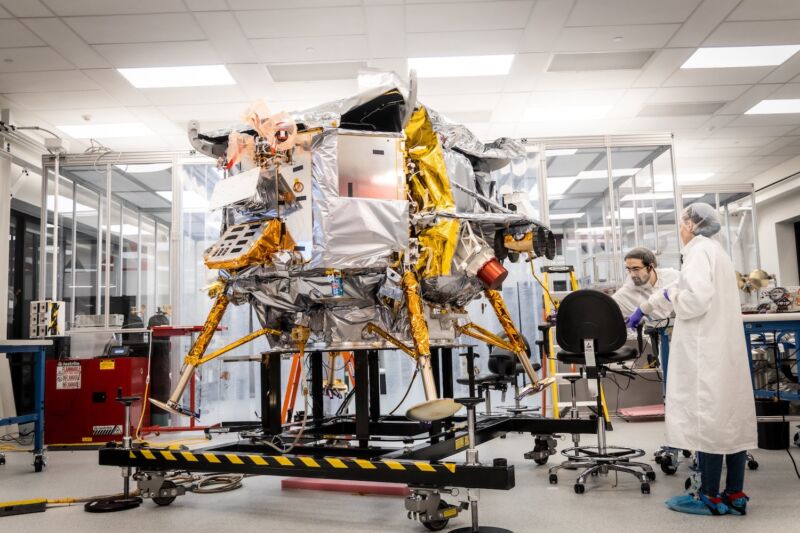Enlarge / Astrobotic’s first lunar lander, named Peregrine, is complete and ready for shipment to the launch site at Cape Canaveral, Florida. (credit: Astrobotic)
Within a few months, NASA may celebrate the first successful landing of an American spacecraft on the Moon in more than 50 years. This would be an immense confidence boost for commercial startups with an eye on the nascent market for lunar missions. It would also signal to NASA that it can rely on commercial companies for foundational elements of the agency’s Artemis program to return humans to the Moon.
Realistically, there’s also a chance that the first two commercial robotic lunar landing missions may miss the mark. One or both could crash on the lunar surface or otherwise falter along the journey from the Earth to the Moon. This wouldn’t be a disaster. NASA officials have smartly set low expectations for these early commercial lunar missions, but these first landers are several years late, and a series of failures would inevitably raise questions about the program’s future.
Five years after NASA started the Commercial Lunar Payload Services (CLPS) program, two companies finally have lunar landers ready for final launch preparations. Astrobotic’s robotic Moon lander, Peregrine, has been in storage since March at the company’s headquarters in Pittsburgh. This week, Intuitive Machines showed off its completed Nova-C lander to Ars in Houston.
Read 46 remaining paragraphs | Comments

